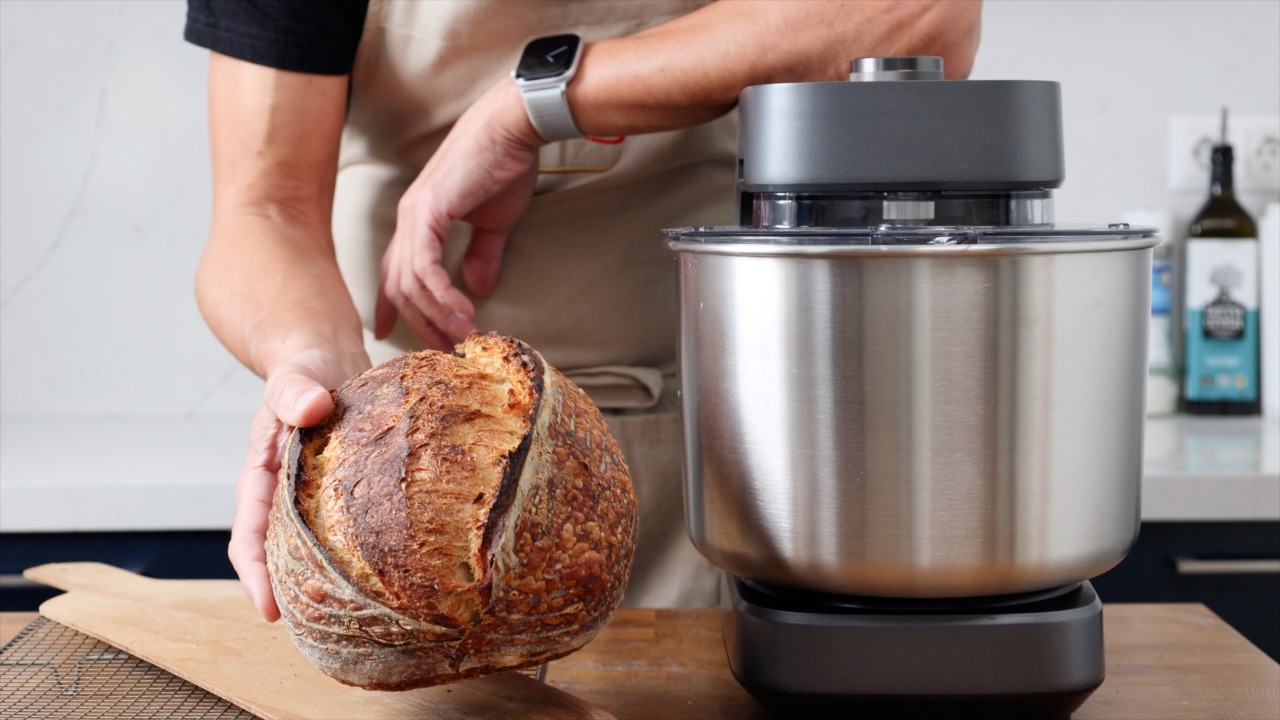The Economic Strategy to Maintain Your Sourdough Starter

I’m not sure about you, but I have wasted so much time and flour trying to maintain my sourdough starter. This equates to lots of wasted energy and money. Hardly an economic or sustainable solution, for me at least anyway.
The amount of starter each person needs for their baking is different. But the overriding goal should be the same; to maintain the minimal amount possible, storing it in the fridge when not in use.
Keeping the starter out at room temperature requires continuous feeding to keep the starter going. That’s a sure way to produce lots of wastage. The starter will live quite happily in the fridge for long periods between feeds.
Wastage is inevitable when you first create your sourdough starter. You shouldn’t be concerned about discarding it to feed it again. If you didn’t, you would end up with enough sourdough starter to open a bakery.
But once your starter is up and running, it’s time to plan and think about your feeding strategy.
It was time for me to embark on a new path, one of less waste.
Planning my new sourdough baking schedule
My first step was to think hard about my baking routine and work out a new strategy.
Up until recently I maintained a sourdough starter and created a production levain from it. None of the levain was wasted, but I was often discarding my starter.
I decided I was going to use the scrapings method. The principle is quite simple. After using your starter to make your main dough you are left with scrapings inside the jar. The lid is popped on the jar and stored in the fridge.
When it is time to feed your starter again, you add your flour and water to the jar with the scrapings.
I was a little nervous about doing this. What if something happened to the jar? Or what if the scrapings dried out? I wouldn’t have any backup!
Luckily I have recently dehydrated some sourdough starter for one of my YouTube videos. Whichever way you are feeding your starter it is always good to have a backup.
I needed 98 grams of starter to use in my main dough. So I added a teaspoon of starter to a jam jar, along with 55 grams of water and 55 grams of strong bread flour.
This would produce enough starter to make the main dough, with enough leftover for scrapings.
I knew that using a small quantity of starter to kick the fermentation off would lead to a long fermentation time. It took nine hours in total.
This timeframe would fit my schedule perfectly. I could feed my starter at 21:00 and it would be ready to bake with the next morning at 6:30.
After making the main dough I would pop the lid on the starter jar and keep it in the fridge until it was time to feed it again.
I have been using this method for over a month now and I haven't wasted any flour at all. This has completely streamlined my baking process.
I used this method in last week's YouTube video and many of you asked if it was possible to make a larger quantity from the scrapings.
So it was experiment time.
I mixed 250 grams of water and 250 grams of strong bread flour with 5 grams of starter. Imagine, the starter I used had been in my fridge for 4 weeks and hadn't been fed during that time.
24 hours later I had a bubbling pot of sourdough starter, it just goes to show how resilient the sourdough fermentations are.
It also answers your question. Yes, you can use this method to ferment larger quantities.
You can see how I use this method in my daily baking schedule by clicking here.
Will I continue using this method?
When I experimented with this method I was worried that it would impact negatively on my final loaf. I can happily say that has not been the case.
My sourdough tastes fantastic. My process is simplified, and I’m not wasting any flour.
This method fits my schedule perfectly as the starter ferments overnight and is ready to go the next morning.
At the moment I am mainly baking wheat sourdough. I am wondering how this will work when I want to make different levains for different sourdough bread.
But you can rest assured that I will be testing that out very soon!
I don’t know if this method would work well if you don’t bake regularly. The scrapings could be prone to drying out, needless to say, I am in the process of testing that as well!
If you enjoyed this blog and would like to support ongoing content creation and help keep the website ad-free, you can click below to make a contribution.
Watch the YouTube video
As an Amazon affiliate, I earn from qualifying purchases


